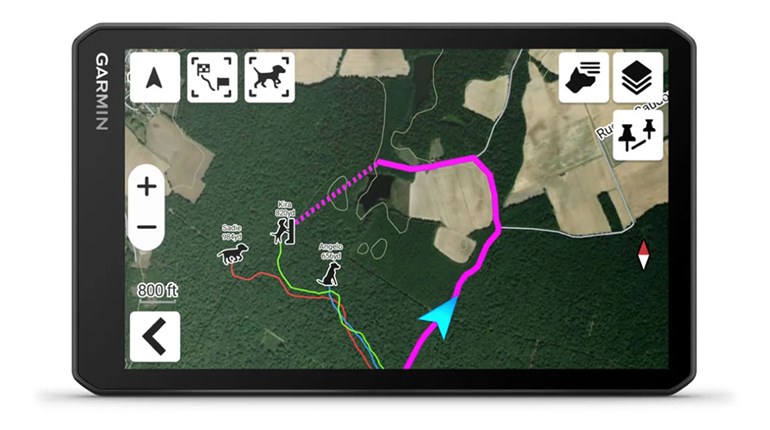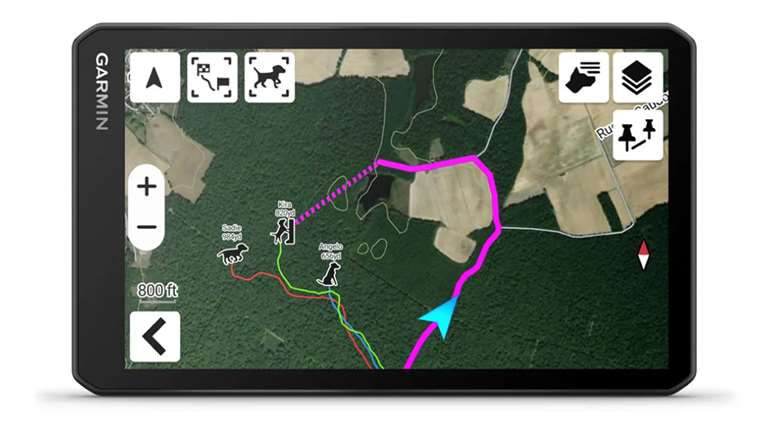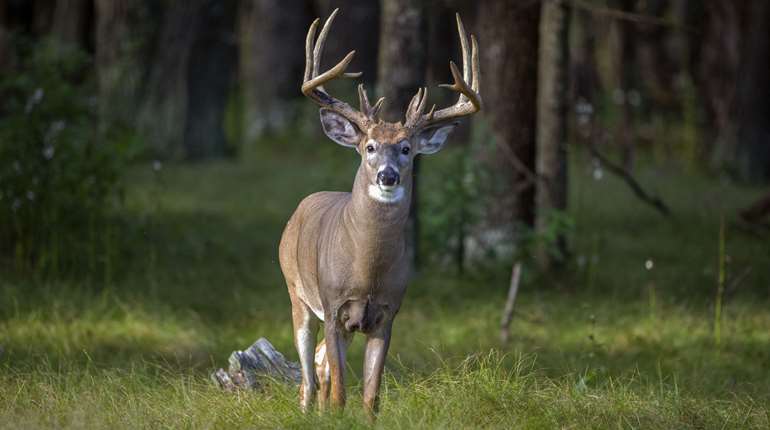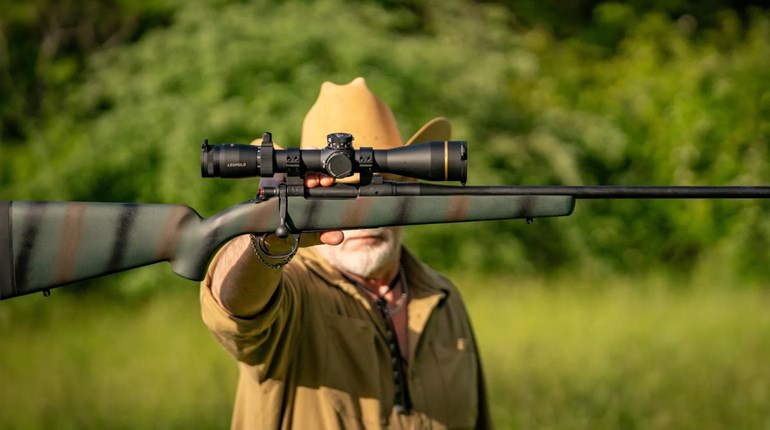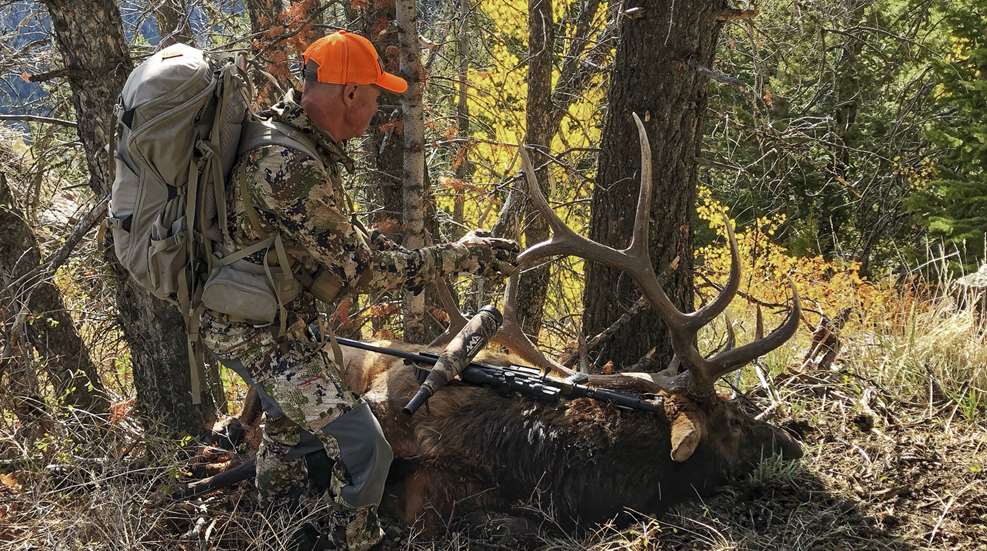
It was a head-scratcher for sure. Two days prior I didn’t know what bugle to pursue as the giant mountain bowl held more than a dozen bulls. Pandemonium prevailed. Several close encounters supercharged my confidence for a shot. Not surprisingly, by the end of the day the elk won, as it was obscured by a screen of timber and a protective team of cow elk that rivaled the president’s security detail. Now, the mountainside stillness was broken only by the occasional squawk of a circling raven. Where had the elk gone?
Whether you stood on a Colorado mountainside in the past as a tourist or rambled the mountains in search of elk on a recent hunt, the enormousness of the West just screams “elk should be everywhere.” They are not. Trust me. After decades of hunting across a half-dozen Western states for these striking beings, I know you cannot throw a dart on a map and expect to find elk. Millions of acres of public land give you hope, but you need to go beyond hope and understand both simple and complex factors that direct elk to a destination. I’d call it a final destination, but elk rarely stay in one place for long unless it is behind a fence restricting heavy hunting pressure. To help guide you to where elk may have a short- or long-term lease, consider the following elements that direct elk traffic.
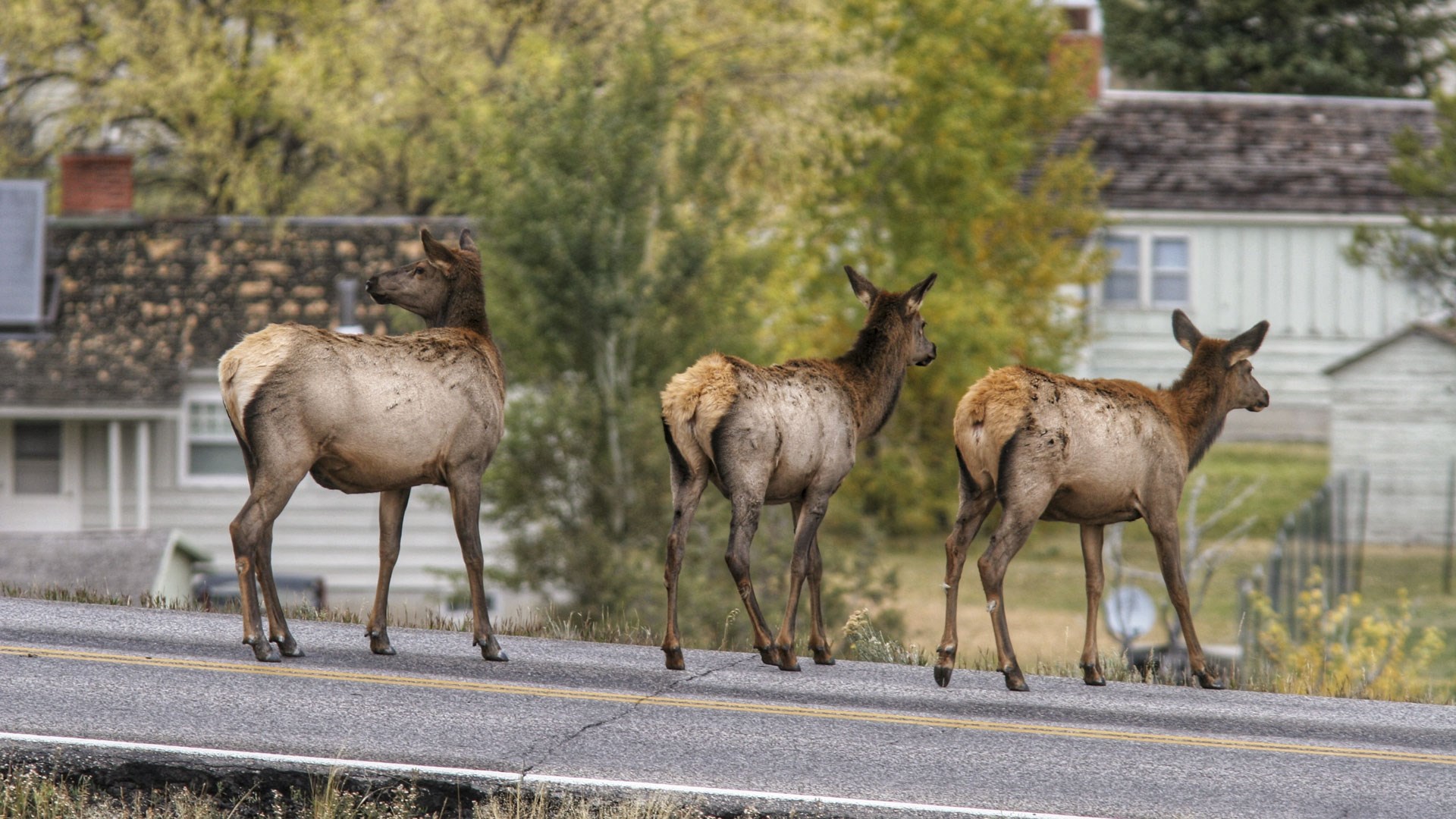
Elk Are Migratory
Let me restate that. Most elk are migratory. Some elk just shift around an area to take advantage of different habitat nutrition as the seasons change, but mountain elk travel from the abundance of nourishment in the high country to lower elevations with less snow. Data suggest elk abandon areas when snow consistently reaches a depth of approximately 2 to 3 feet, although hardy animals may just utilize steep south slopes if enough open mountainside is available for grazing.
According to the U.S. Geological Survey on Ungulate Migration, the famous Jackson elk herd, which winters at the National Elk Refuge and therein, migrates an average one-way trip from 39 to 168 miles. That herd in good years exceeds 10,000 animals. Migration may take just days or nearly two months for some animals at the extreme end of a migratory route.
That same Jackson elk herd also exhibits a phenomenon that is becoming increasingly common across the West: nonmigratory elk. A few just never go anywhere. Information on the U.S. Forest Service website distinguishes how some herds migrate, like the Jackson elk herd, and others do not due to weather, and ideal habitat considerations.
“For example, in the Greater Yellowstone Area, the Gallatin Canyon, northern Yellowstone, Sunlight Basin-Crandall Creek, North Fork of the Shoshone, and Jackson elk herds are migratory, whereas the Madison River elk herd is nonmigratory but exhibits local shifts in habitat use among seasons,” states the document.
Tactic—The good thing about elk migrations is that the major ones are well documented. The bad thing is that small herds often improvise, and over time these smaller groups readjust to new sanctuary zones. After a few years of repeated travel to a new refuge or wintering area, the waypoint becomes a hardened end point.
Begin with locating migration research. Most states monitor migration routes along with seasonal times of use. Many have maps available of the migration corridors used, such as the routes the Jackson herd uses to reach the National Elk Refuge. For confirmation, reach out to a biologist familiar with the data.
For the smaller, less significant migration patterns, you might be able to get that information from a biologist or an area game warden, but hunting acquaintances, family and area landowners could provide equally useful information. And remember, major migrations may occur from heavy, high-country snowfall, but in today’s world elk could just as easily move to a refuge setting, like a private ranch, from anticipated hunting pressure. That is more common than you might believe. Regardless, locate the route and set up ambushes along the way.
Elk Have Habitat Preferences
Elk do have habitats they prefer over others. Unfortunately, elk live a life more akin to a whitetail than, say, a mule deer or even a pronghorn. That means they are very adaptable. You only need to skim history books to understand elk adapted from coast to coast and Canada to Mexico. In the summer of 1804, the Lewis and Clark expedition was already dining on elk as they entered the prairies of South Dakota. Pioneer pressure and intensive market hunting pressured elk into the Western mountains for refuge. Despite this early setback, elk have been extraordinarily making a comeback across deserts, prairies and even Eastern forests as transplants thrive. Never underestimate where you can find elk, especially if human pressure is not intensive.
Although elk can live most anywhere, they do have basic needs. As large animals, they require water during snowless periods. In arid environments keep this in mind. Most notably, they require grass as grazers. Elk browse in limited situations as needed, but unlike deer, they seek out grass forage as their main dietary staple. This means they likely need to leave dark timber, characterized by pine needle duff, to survive. Dark timber, like stands of pine, juniper, cedar or fir, attracts elk due to its concealment quality. Nevertheless, a heavy canopy rarely allows enough light for ample forage to thrive. Notable exceptions include stands of aspen and Gambel oak, plus a few other more open canopy species. Those exceptions aside, use an elk’s need for large amounts of grass to find elk.
Tactic—What does grass need to grow? Begin the hunt for open areas exhibiting the highest quality soil. Note open-canopy habitats, flat slopes and especially low-lying areas, possibly with a creek or springs in the mix. I’ve ambushed elk on vertical slopes displaying good grass growth that is often shunned by domestic livestock. I’ve also waylaid elk as they left steep mountainsides to take advantage of low-elevation meadows and even hayfields. You may have permission to hunt private agricultural fields, but your hunting app (huntstand.com) could reveal a plethora of public-land elk use as a daytime safe zone after feeding all night on shuttered private lands. Several of my bulls fell due to lustful grazing by elk needing to escape back to public land for the best in thermal and predation protection. I was waiting.
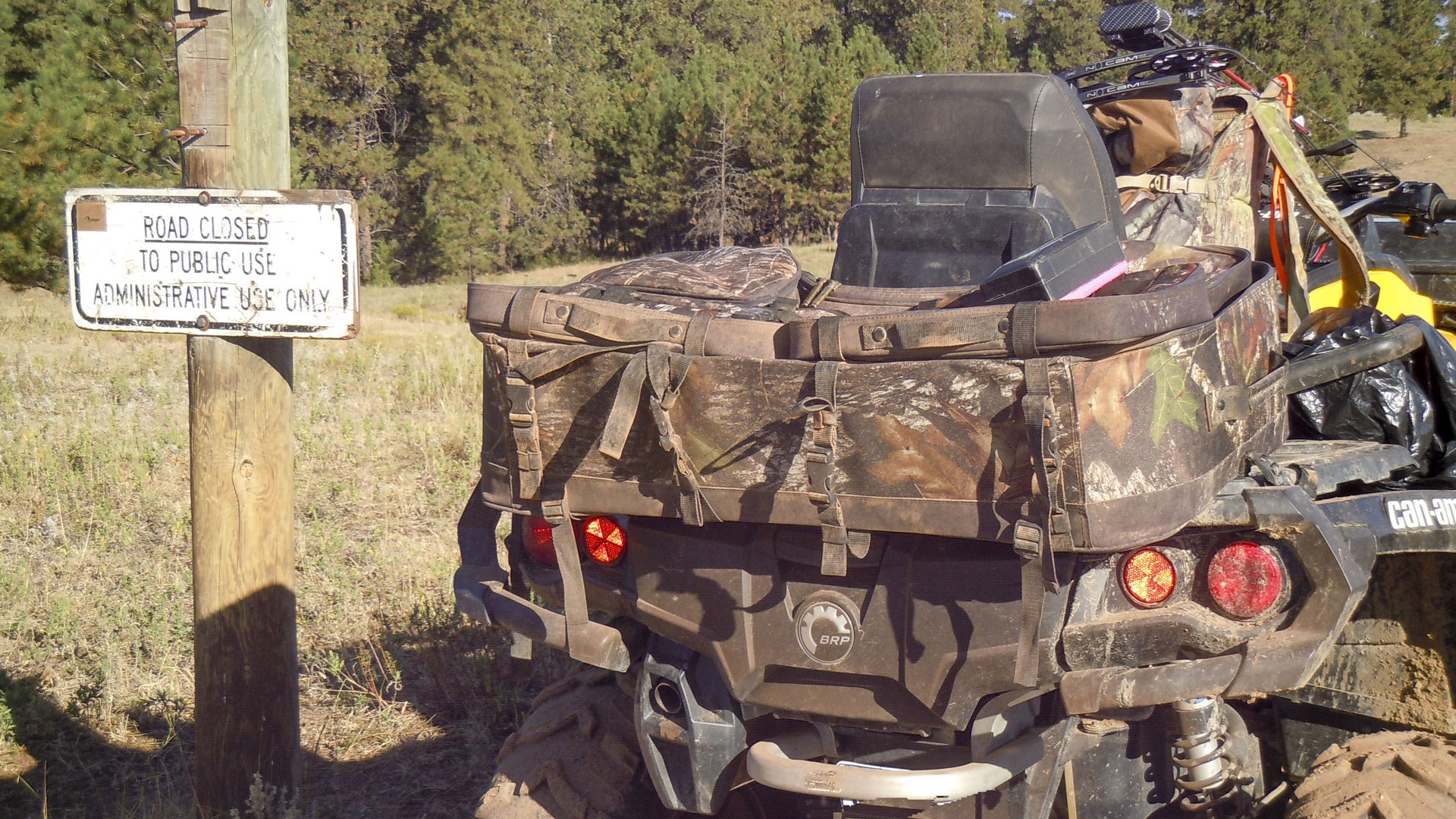
Elk Are Not Homebodies
You have likely heard elk are long-legged cursors. I’ve used this description many times as a student of wildlife sciences. According to a script in the book North American Elk Ecology and Management, cursors use specialized movement for survival.
“This strategy minimizes costly body heft and directs expended energy into forward propulsion, while allowing runners to avoid obstacles that might impede speed or block flight.”
Elk also have large lungs and hearts to support this runner’s attribute, along with a large-diameter windpipe for air exchange. Not only can elk stomp the gas pedal when required, they can maintain a walk or jog for extended timeframes.
When elk move, they move with purpose and have no reservations about leaving one domicile for another. Although whitetails customarily maintain a home territory of 1 square mile, elk do not have the same instinctiveness to stay, especially if the environment becomes threating via weather or predation. How far they move depends on the threat, but several miles of escape at an average trot of 15 mph allows them to find a new home quickly. Even with this vamoose ability, elk do have preferred hangouts, as in summer range, winter range and rutting grounds.
With all that knowledge, never expect to return to elk day after day. You may catch them in an area one day, as I described in the opening, and the next day they could be 15 miles away after experiencing repeated intrusions into their lives.
Tactic—Bet on the fact that any elk you stumble across will undoubtedly have a brief pattern for your exploitation. Use the encounter, but back up your backup plan and have that backed up as well. Last summer I scouted a new general unit in Montana to back up two additional general unit locations where I have been successful in the past. I then backed that up with another general unit location offered up by a good friend of mine. Even with all that backup, I still did not tag an elk after two weeks of pursuits.
Whether you have the option to move among general units as I did or are regulated to hunt a particular unit, scout for several hunting areas as, inevitably, one or more will grow quiet. At the same time, consider a camp that can become mobile with minimal effort. You may be able to buzz to a new location quickly on your four-wheeler, but do not bet on it. Consider a minimized camp until you find elk or for the entire length of the hunt.
Elk Prefer Isolation
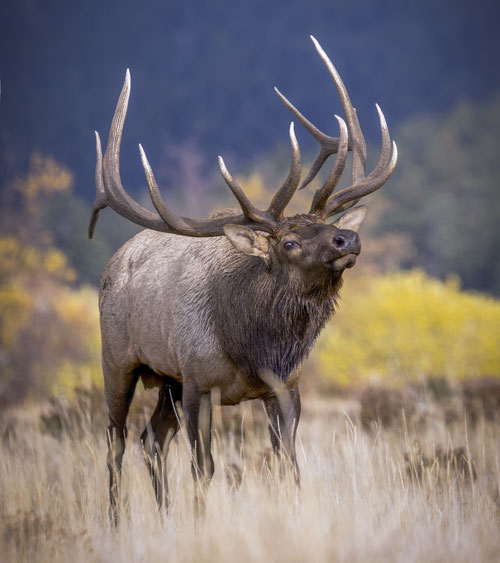
Your smartphone likely streams memes of Estes Park, Colo., as elk charge fashionable tourists and chase golfers donning Titleist ballcaps. These elk have been habituated to humans over decades of protection. Elk in the wild, on the other hand, do not appreciate a Gucci-carrying Easterner window shopping in their homelands.
And as more pressure falls on our public lands for multipurpose uses such as mountain bikers, offroad vehicle use, hikers and even hunting pursuits not focused on wapiti, elk feel the pressure and adapt to maintain an isolated lifestyle.
One peer-reviewed research study on elk behavior associated with recreational activity performed by the U.S. Forest Service in Colorado’s Routt National Forest provides insight. The study in a 124,000-acre area followed radio-collared elk and the results were surprising. Elk were tracked during a period that allowed recreational use and a following period where recreation was closed off. In brief, elk vacated areas of heavy recreational use—no surprise there.
“Elk would avoid 60 percent of the landscape, over 74,000 acres when feeling recreation pressure. A flight response from elk could be initiated in over 88 percent of the landscape, nearly 110,000 acres. In only 12 percent of the landscape were elk considered undisturbed, a total of 14,000 acres out of 124,000.”
When the hunting pressure explodes, elk definitely head for the hills to live the recluse way of life. You must follow.
Tactic—Two options exist for you to find elk in isolation. The first is obvious. You need to embrace a “can-do” attitude and go to the elk. The second answer is to locate elk in accessible areas, but overlooked by the average hunter. Both require physical fitness, but the latter requires lots of luck. Herds of elk rarely go unnoticed.
First, take your map or hunting app and begin scanning for all trails closed to motorized access, even E-bikes. The area must have open landscapes for grazing and water sources, but above all, no motorized vehicle usage. An area without mapped hiking trails is even better to keep the timid backcountry explorer at bay. My general rule of thumb is to find an area at least 2 square miles fitting these criteria, then I go looking for elk.
In the second example, scour your maps for small tracts of public land up against private holdings or even large blocks of public land only accessible via a difficult, yet short hike. Think steep elevation here. I have two hotspots in two different states that you can access after a short ATV drive. I ascend almost straight up 1,500 feet or more, some of it through deadfall, and I land in elk.
■■■
After the silence of several days in the mountain bowl I knew the elk were not coming back. Scrolling through maps on my HuntStand app, I came across my notes on a marker placed on a slope a few miles away. It read “steep and lots of sign” with a bull elk emoji. That afternoon I clamored upwards to investigate the slope and the marker was correct. There was a lot of fresh sign, but no elk to corroborate the elk emoji. Maybe it was a morning feeding area, I thought. Its remoteness, grazing opportunities and adjacent dark timber all pointed to a hidey hole partial to elk.
The next morning, I made the open slope just before shooting light and settled into a far corner to survey the slope. It did not take long as elk began streaming from the opposite corner of the opening, feeding in a quiet, yet voracious manner. With a sweeping glance, I soon found my target, a very respectable 6x6 bull. I did not hesitate as he was moving with determination between bites to reach the shadowy timber recesses. I pushed the fore-end of my Bergara .300 Winchester Magnum into a crease in my backpack and watched the impact of the 200-grain Hornady ELD-X bullet. The bull wasn’t long for this world, as it crumpled. Although elk were not everywhere on this hunt, one particularly gorgeous bull was now waiting for me across the open slope.
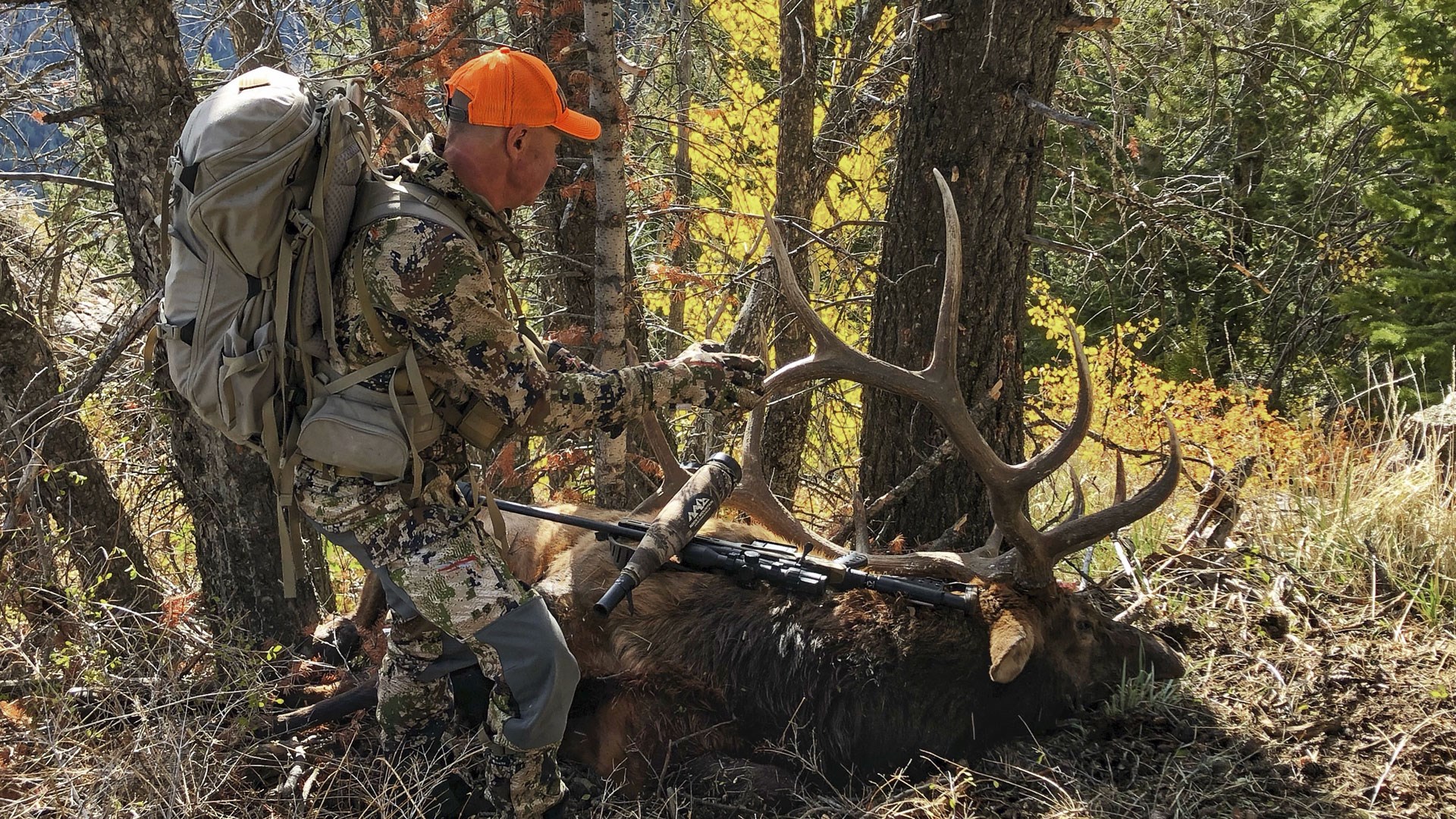
The Changing View of Elk Country
Whether you like it, you cannot change it. Elk country is changing. The terrain looks the same, but elk themselves no longer behave as your grandfather or grandfather’s father experienced. Instead of living a life of summering high in the mountains and migrating to foothills on a predictable schedule, elk have changed the rules and do what they please, when they please. All the major elk states, including the three biggies, Colorado, Wyoming and Montana, have dedicated massive amounts of time and money to elk herds now above management objectives. Great conservation efforts have led to this win, but elk moving into a variety of sanctuary settings, oftentimes impossible to hunt, also have boosted numbers. Here are a few examples of the changing view of elk country.
Suburbs—You likely have seen scary videos of elk chasing tourists in Estes Park, Colo., but that’s not the only place elk thrive in a suburban setting. There’s also Park City, Utah, and Loveland, Colo., and in 2023 a woman was trampled to death by an elk in Pine Lake, Ariz. While bowhunting in Colorado a couple of seasons back, our scouting led us to the suburbs of a city of more than 10,000 residents. We found the elk, but they were too close to the barbecue grills to hunt.
Expect to find elk living near or embedded within residential areas. Parks, golf courses and green spaces throughout the West now see elk inhabitants year-round, with an influx in winter. Keep an eye out for hunting opportunities just beyond the barbecue grill.
Private Ranches—This is the biggie that game-and-fish agencies deal with; in fact management has moved beyond agencies straight to the legislature in many instances. The trend of wealthy people purchasing ranches, large and small, and shuttering public hunting has created a vacuum of elk from the backcountry to live on these sanctuaries, oftentimes permanently. Even with limited trophy hunting, the pressure does not drive the elk back to public lands.
Legislative fights come about with landowners asking for additional landowner tags and even compensation for feeding the large herds. Of course, the hunting public offers a clear answer, but do not bet on open gates to these massive herds as the debate continues how to manage public wildlife vacationing on private lands. Some landowners allow ample opportunity for late-season cow hunts after their trophy hunts end. Game wardens are privy to this information in many instances. Do your research.
Prairie and Desert Units—Lastly, elk country has not changed in many areas, but elk simply returned to their roots. Places like Pennsylvania and Kentucky now harbor robust elk herds along with a handful of other locations east of the Mississippi River. Out West though, elk have left the mountains to expand into desert and prairie areas where they lived prior to European settlement. South Dakota now offers several prairie hunts (resident only) and Wyoming’s Red Desert elk hunt is a highly sought-after license. Look out for new units as herds expand to areas where they once thrived.












